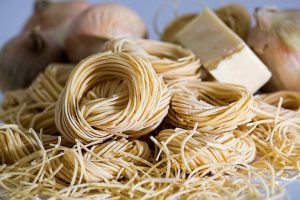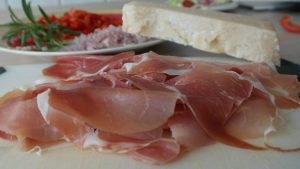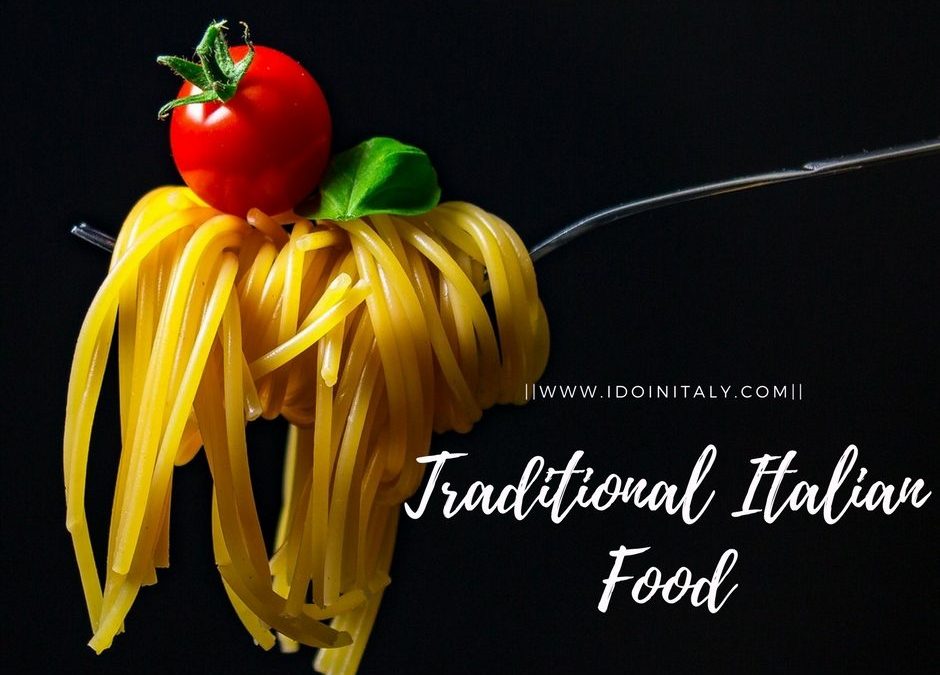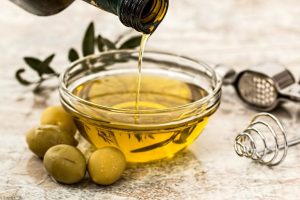ITALY, NOT ONLY PIZZA – TRADITIONAL ITALIAN FOOD

HOW TO GET MARRIED LEGALLY IN ITALY
February 8, 2018
GET MARRIED AT THE SPA – RELAX FOR YOUR WEDDING
March 1, 2018TRADITIONAL ITALIAN FOOD
Dear friends, it is certain that among traditional Italian food pizza is the undisputed queen. Wherever you are in the world, you can rest assured that after uttering the word “Italy” your interlocutors will definitely think of pizza first. Suffice it to say that roughly 5 million pizzas are produced every day only in Italy. Colossal numbers, but certainly not anything out of ordinary; pizza truly represents a bona fide masterpiece Made in Italy. You can taste an excellent pizza at a city restraurant in any part of the world. However, Italy has not only pizza to assert itself in the world, but a great variety of traditional Italian food being exported by Bel Paese; its gastronomic delights are renowned worldwide for their excellent quality acknowledged thanks to Made in Italy trademark, ensuring first-class products for
years.
Indeed, Italy holds the world record for the abundance and diversity of the agroindustrial heritage with its 5047 specialties of traditional Italian food. It would be impossible to name them all, however, it is interesting to know that 512 delicacies among them are found in the region of Campania, thus ranking first with its traditional agroindustrial products. The second place is awarded to beautiful Tuscany, introducing no fewer than 461 products and followed by Lazio with its 409 traditional agri-food specialties, being gifted the third position.
And so, today I will show you the most appreciated Italian products around the world.
Traditional Italian Food: the 7 most exported products
1# Olive Oil
We start with a product that is surely known and appreciated by all – the extra virgin olive oil.
It represents one of the best cooking condiments vastly used all over the world. Being a valuable product, approximately 23% of the entire olive oil you find in the market is produced in Italy.
2# Grappa

Traditional Italian Food
Grappa is an Italian distillate, maintaining a ceturies-old tradition in its preparation. Grappa represents a grape marc spirit made of grape residue left after the pressing. Once considered a “poor” liqueur due to the distillation with the pomace left over from winemaking, Grappa is now a symbol of a particularly acclaimed and admired liqueur.
3# Cheese
 Traditional Italian Food
Traditional Italian Food
Italian cheese production is pretty extensive and embraces many years of history and tradition. Cheese can be produced from whole milk, semi- or full-skimmed milk. The ancient Romans were the first to use it and to begin utilising cow’s milk along with sheep’s and goat’s milk. They learned to season and coagulate it by adding some milk thistle or fig milk, or a saffron and vinegar mixture. And so today
it is considered one of the most exported Italian products worldwide.
4# Pasta
 Traditional Italian Food
Traditional Italian Food
Preparing maccheroni without sauce is like having a party without friends.
It is also linked with an ancient culinary tradition. Pasta portrays a true and genuine symbol of Italy as well as one of the most appreciated specialties ever around the world among traditional Italian foods. The history of pasta takes its origin from the very moment man abbondoned his nomadic life and became a producer, grasped sowing and harvesting. Thereupon the history of mankind and wheat tied the knot and brought forth pasta, representing nowadays a widely known and highly regarded product in every part of the world. There is an enormous variety of pasta as well as of the condiments serving to its enrichment with fragrances and flavours.
5# Parma Ham
 Traditional Italian Food
Traditional Italian Food
A millenary history encircles Parma ham that is in all likelihood influenced by the presence of saline springs on the territory, the properties of which were soon explored by the local farmers for the meat preservation. It offers one of the most savory hams in the world, rich in fragrances and flavours, owing its name “Parma Ham” to the place of origin of the animals coupled with inimitable microclimatic and enviromental conditions of a delimited hill area of the province of Parma.
6# Wine
“Where there is no wine there is no love,
nor any other delight have the mortals”.
Euripide (480 a.C.- 406 ca. B.C.)
 Traditional Italian Food
Traditional Italian Food
Italian wine is known and acclaimed all over the world. Fine Italian wines are among the most demanded products in the world, representing a true banner of Made in Italy label.
7# Panettone from Lombardy
 Traditional Italian Food
Traditional Italian Food
Panettone represents a typical dessert from Milan, associated with Christmas gastronomic traditions. It is difficult to determine the date of birth of panettone, however, the recipe of its first ancestor appears to be already known from ‘400.
The history of panettone is linked to a legend, offering at least two different versions of events. Both of the Milan-born narratives attribute the creation of the dessert to the times of Ludovico Moro, the Duke of Milan (XIV century).
A truly special dessert that first conquered the hearts of Italians in order to then excite with its sweetness the feelings of people throughout the world.
THANK YOU,
I Do In Italy

